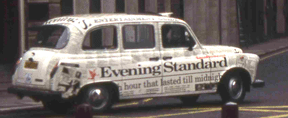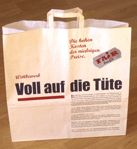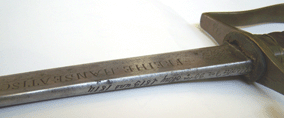En-Passant-Media



En-passant-media are media that were not originally intended as communicative media but as structures (e.g. walls) or protective covering (e.g. skin, clothing), or were intended for very specific (and restricted) communicative purposes (e.g. money, trafic signs, etc.). Also tools or commodities like clothing, vehicles, etc. can become en-passant-media. Their message function is additional to a ”core” function that may be completely other than communicative or intended only for the communication in very restricted contexts (e.g. money, marks of ownership in sheeps ears). But in todays usage, the communicative intention can be the main aspect when chosing amongst alternative artefacts, e.g. which style of clothing to wear for specific occasions and in everyday life, etc.: Cothing is a rather complex message system, but e.g. t-shirts with slogans on are an established form to comment on issues and/or express moods in certain sub-cultures.
The concept of en-passant-media is potentially quite far reaching for research on representation and visual communication as it looks into the cross-medial expression of specific motifs and themes. References and statements that tend to be considered decoration, ”asides”, or as non-verbal echoes of societal or sub-cultural discourses are put into focus as expressions of the self, they are clustered and examined in their communicative and performative function as statements that influence the verbal and mass-medial debate.
En-passant-media combine their content, i.e. messages given in texts and/or images, with the quality of materials and production used for placing or producing (e.g. stitching or drawing and writing onto surfaces). The choice of the artefacts on which messages are placed is part of the communication situation and therefore important for reading the message, too.
Sign systems are used for specific or in-group communication and influence the communication of culture in general and vice versa. Both ways of communication are expressed in all sorts of media. In en-passant-media additional systems of meaning are developed to the core function of the things carrying the messages. For example graffiti, tattoos, or textiles carry text and/or pictorial content. This concept collects messages / statements that are coded in images and/or written texts – often texts with distinct pictorial qualities as e.g. in calligraphy. The materials used for the added message can be part of the message itself, but do not have to.
It is important to note that content that is expressed in these media is not public automatically, as visibility of messages can be reduced or even fully blocked: According to the placement of a message, it can be concealed or revealed for specific recipients, making the message a private or a public communication. Most obvious example are those tattoos that are covered by clothing and only bared willingly. Accordingly, en-passant-media can be mass media and media for private communication, as not the amount of copies is decisive for the accessability of the message, but its visibility to a very selected audience or a wider part of the general public.
To look at the group of en-passant-media allows for the scrutiny of all sorts of objects from a media-studies perspective. It relates and combines research on different fields of design developments etc.
The concept of en-passant-media is explained more thoroughly in:
Jakob F. Dittmar: "British Coins: Minting a national pictorial programme."
In: Anton Kirchhofer, Jutta Schwarzkopf (Hrsg.): The Workings of the Anglosphere.
Contributions to the Study of British and US-American Cultures, presented to Richard Stinshoff.
Trier: Wissenschaftlicher Verlag Trier, 2009. 193-201.
Also in Jakob F. Dittmar: "Reinforcing Local Identities Through Landmarks and Their Representations in En-passant-media : The Special Case of the Angel of the North" in: Ina Habermann (ed.): Topographies of Britain. Amsterdam: Rodopi, 2016.
There is a book on en-passant-media (in German) on the matter:
Jakob F. Dittmar (2009): Im Vorbeigehen.
Graffiti, Tattoo, Tragetaschen: En-Passant-Medien.
Berlin: Universitätsverlag der TU Berlin.
There are more details on en-passant-media on the German version of this page.